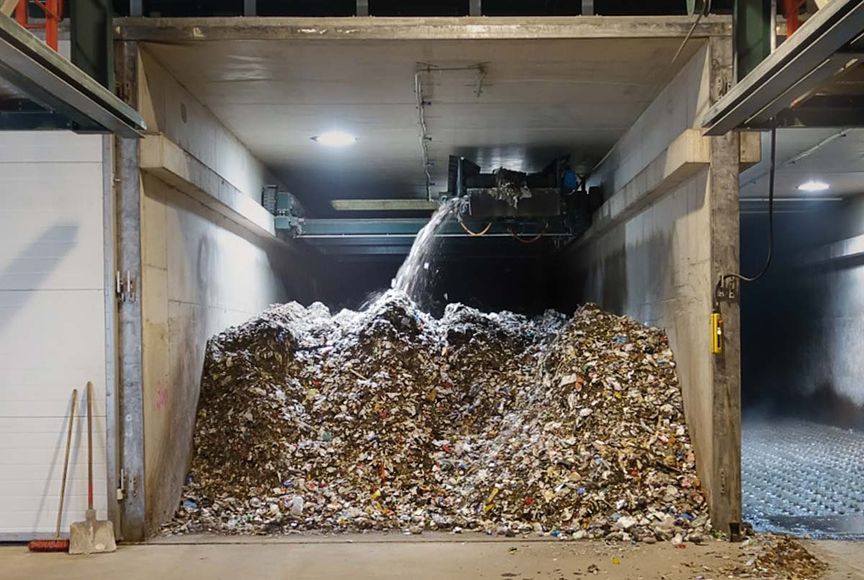
Specialized company for disposal

The combination process
The RMB uses two processes at the same time - fermentation and composting of organic waste - which make considerable positive contributions to climate protection and the greenhouse effect.
Climate protection through fermentation
The biogas produced by the fermentation of biowaste is rich in methane (similar to natural gas). The biogas is burned in gas engines (combined heat and power plants). The technology of cogeneration plants is based on the principle of combined heat and power generation. This means that electricity and heat are generated simultaneously from the fuel biogas.
The advantage of cogeneration is a high degree of efficiency. This means that a great deal of energy can be extracted from the fuel. This conserves resources and thus contributes to climate protection.
The CO2 balance of the energy production from biogas, which is produced during fermentation, is neutral, as only as much CO2 is released as the plants have absorbed during their growth. Energy is therefore gained without burdening the environment with additional CO2. This contributes to climate protection.
By fermenting animal manure in the RMB plant, additional methane emissions are avoided. The methane that would otherwise be produced in the barn does not escape freely into the atmosphere here. Methane should not only be burned because of its high energy content as in the RMB, but also because of its high harmfulness to the global climate. Methane is about 24 times more harmful than CO2, so processing it as in the RMB plant contributes to climate protection.
The energy produced from biogas is fed into the public power grid. This reduces the consumption of raw materials such as natural gas or oil, which usually produce additional CO2 emissions during energy production. The substitution of primary energy sources by biogas thus contributes to climate protection.
Climate protection through composting
The CO2 balance is also neutral when composting. In contrast to incineration, the organic substance is retained. Only a part of the carbon in the biowaste is released into the environment in the form of CO2 through organic decomposition processes. This proportion corresponds approximately to the amount of carbon that the plants have previously absorbed from the air in the form of CO2.
The other part, the CO2 bound in the plants, is bound long-term in humus substances that are difficult to degrade. This humus gives the soil its fertility and protects against erosion by wind and water. There is no further metabolism, no further release of CO2. The resulting compost is thus a carbon sink and contributes to climate protection.
The compost also provides other nutrients available to the plants, which make mineral artificial fertilizers superfluous. This saves energy and emissions for their production..
By using compost, peat can be replaced, which also contributes to climate protection. Every five years, up to 350,000 square kilometres of agricultural land are lost worldwide because the soil erodes. This corresponds to the area of Germany.
The process of composting, as it has been taking place in nature since time immemorial, is thus also realized in the RMB process - but this is accelerated by ideal living conditions for the microorganisms. In the composting plant, the closed natural cycle is thus copied and accelerated for the benefit of the environment and climate protection.

